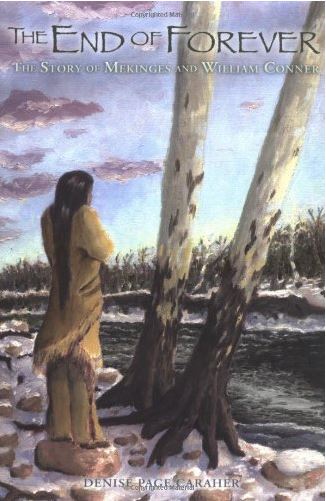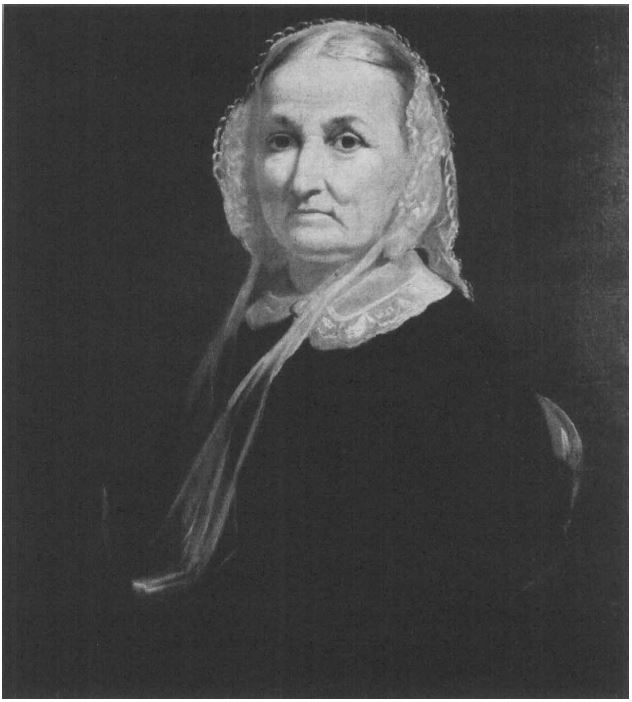The Two Wives of William Conner
By: David Heighway, Hamilton County Historian
Continuing with Women’s History Month, I thought I would look at the first two women of note in the county.
 Mekinges
Mekinges
There is a lot of folklore and fiction around her story, as well as silly romanticism. Some stories and histories refer to her as an “Indian princess”. The Lenape (Delaware) Indian tribe didn’t work that way. Families were based on matrilineal descent, in which your clan was determined by who your mother was. However, she was one of the daughters of Kik-tha-we-nund – Chief Anderson – and was still an important connection to the tribe.
Of course, the best research on Mekinges has been done by Conner Prairie. The Wikipedia entry has more details, some of which could be questionable. There are a few facts that seem to be clear.
She married William Conner when he built his trading post on the White River in 1802. She was probably in her late teens and he was 25. They had six children between 1802 and 1818. The area of Hamilton County was a battle zone during the War of 1812, so the trading post was presumably abandoned. Conner joined the army and went to do scouting for General William Henry Harrison, and the Lenape went back to Ohio to wait out the war. They returned in 1815.
Conner helped to negotiate the Treaty of St. Mary’s in 1818 in which the Lenape gave up their rights to the land and moved west. Mekinges left with the tribe in 1820. There are several different stories about Conner’s actions in this. In some, he gives her half of his goods or money and horses. Other say that he rode with the family for a day. The only thing that we do know is that a few months after she left, he married the only available white woman in the area. Almost nothing is known of Mekinges’ life after she leaves Indiana. Even her death date of 1861 is only a guess.
In recent years, an opera was written about her life, which was later turned into a novel, The End of Forever: The Story of Mekinges and William Conner, which is available at the library. If you’re a library geek, it’s interesting to see that Hamilton East Public Library has also added a footnote to her life. There was no Library of Congress subject heading for Mekinges until the Hamilton East Public Library Collection Services Department asked for it in 2013.
 Elizabeth Chapman
Elizabeth Chapman
Elizabeth was born in New York in 1802, and when her father died in 1806, her mother married John Finch. The Finch and Shirts families came to Hamilton County in April of 1819, so it’s very likely that Mekinges and Elizabeth met each other. Elizabeth married William Conner on November 30, 1820, when she was 18 years old and Conner was 43 years old. They had ten children between 1823 and 1847. They lived in the brick house now featured at Conner Prairie from 1823 until 1837, when they moved to Noblesville. Their Noblesville house was at the present address of 273 South Eighth Street and was probably torn down in the late 1860’s for the R. L Wilson house (now the home of Heavenly Sweets). There are probably some interesting archaeological remnants on the property.
Elizabeth’s stepfather died in 1846, her mother died in 1849, and Conner himself died in 1855. The children of Mekinges brought a lawsuit to collect their share of Conner’s estate, but they were refused.
Elizabeth moved to Indianapolis in 1864 to live with her children until she died in 1891. She is buried next to William at Crownland Cemetery in Noblesville. For several years in the 1870’s and 1880’s, she tried to collect a widow’s pension for William Conner’s service in the War of 1812 and the Black Hawk War. It’s interesting to note that on a pension application from 1878, it describes when and where Elizabeth and William were married and states “Neither of them has been married before”.
